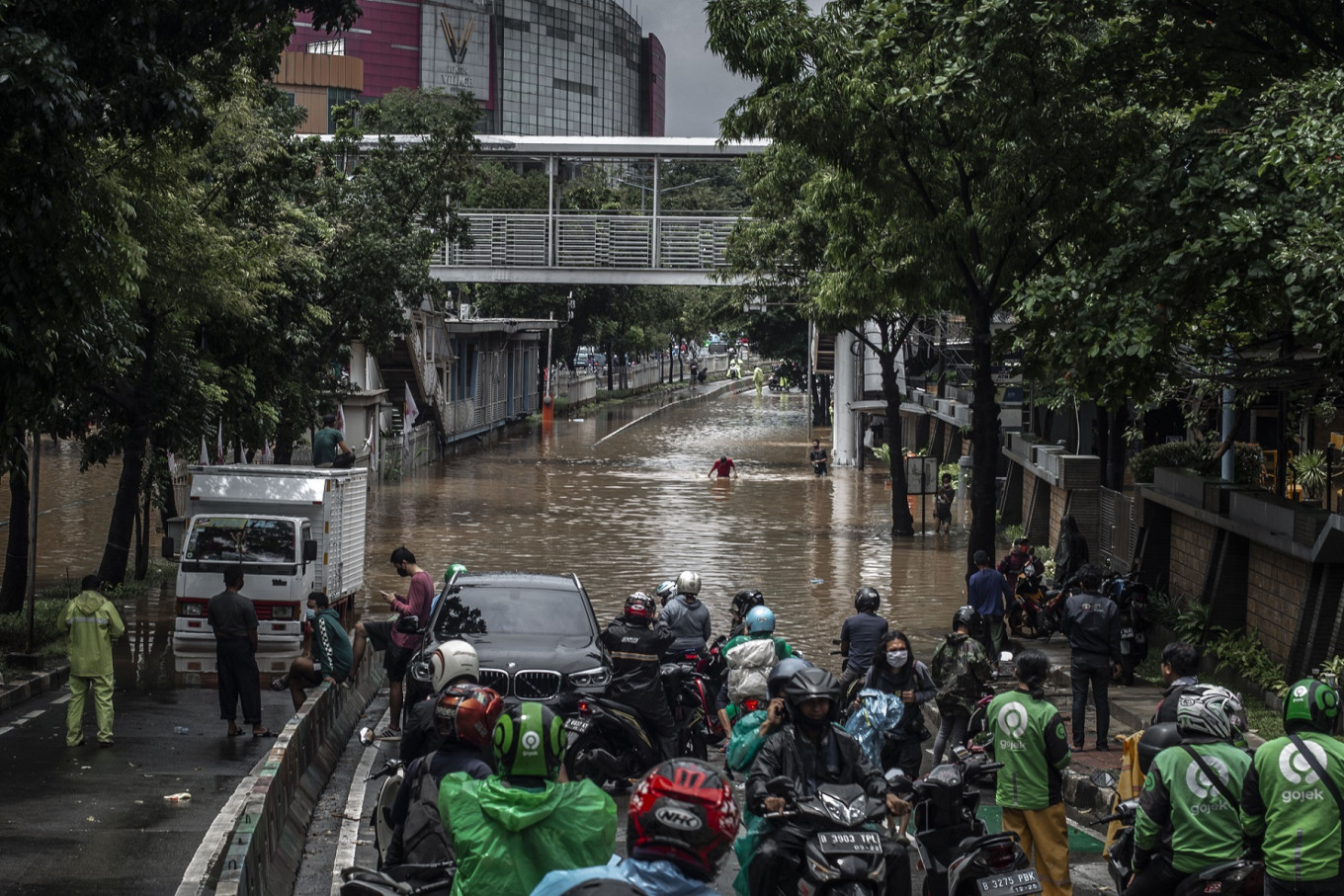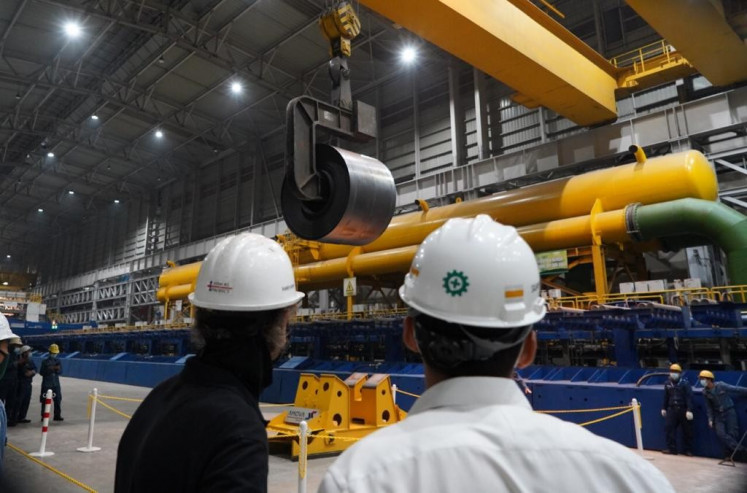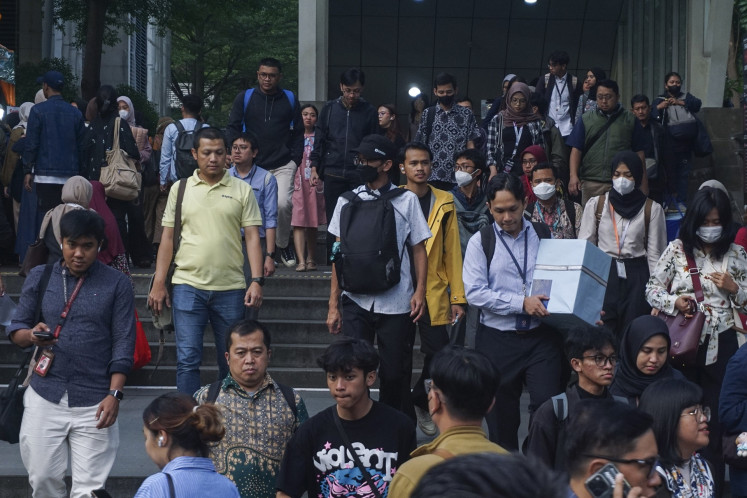Popular Reads
Top Results
Can't find what you're looking for?
View all search resultsPopular Reads
Top Results
Can't find what you're looking for?
View all search resultsFlood-free Jakarta
The politicization of the project aside, the city government needs to review the program as it does not offer a long-lasting solution to the Jakarta floods.
Change text size
Gift Premium Articles
to Anyone
T
he recent controversy surrounding the Jakarta administration’s construction of catchment tanks across the city, except North Jakarta, only shows the complexity of flood prevention in such a densely populated city, where concrete has replaced rice fields, wetlands, forests and even the sea to accommodate the growing economy.
In fact, long before the news that an Indonesian Solidarity Party (PSI) politician’s car slipped into a catchment tank in Lebak Bulus, South Jakarta, earlier this month – which immediately triggered a public debate over whether Jakarta really has to build the facilities, the city administration described them as part of its policy to keep Jakarta from flooding.
Then-governor Sutiyoso, who served in 1997-2007, initiated the catchment tank program, which continued during the term of his successor Fauzi Bowo in 2007-2012. But the number of catchment tanks built as of the end of Fauzi’s tenure was insignificant, which was why his successor Joko “Jokowi” Widodo ordered construction of 100 catchment tanks shortly after he took office.
The project, however, was terminated after the tank built within the premises of the City Hall failed to protect it from inundation. Smarting from the aborted project, Jokowi signed a gubernatorial regulation in 2013 that required office buildings, apartments and housing complexes across the capital to be equipped with catchment tanks. The governor then estimated a requirement of nearly 2,000 tanks.
So there was nothing wrong, actually, with Governor Anies Baswedan reviving the policy. As soon as he was inaugurated by President Jokowi in October 2017 as Jakarta governor, Anies unveiled a plan to construct 1.8 million catchment tanks, which he refers to as vertical drainage, as a solution to the city’s annual flooding problem.
An ambitious target is one thing, but realization is another. With 10 months left before his term ends, Anies has managed to build fewer than 4,000 tanks and his administration is set to increase the number to 300,000 next year.
A number of Jakarta councilors, especially Anies’ detractors, which include PSI politicians, have demanded that the project be terminated following several reports of accidents related to the catchment tank construction. They cynically call the sumur resapan (catchment tanks) resapan anggaran (budget absorbers).
The politicization of the project aside, the city administration needs to review the program as it does not offer a long-lasting solution to Jakarta’s floods. Deputy Governor Ahmad Riza Patria may be right when showing evidence that the catchment tanks recently helped inundations to quickly subside, but that would not be the case if there is heavy rainfall for hours, which could occur as a result of La Nina weather anomaly.
Unlike in Singapore, Jakarta’s catchment tank program is not well-planned and is unintegrated. That is perhaps a matter of funding, which Jakarta lacks.
Solving Jakarta’s flooding once and for all requires well-knit cooperation among the city, neighboring administrations and the central government. They have to meet more frequently, not necessarily in person due to the pandemic, to formulate a comprehensive strategy through learning from past mistakes and successes.
For too long Jakarta has suffered from floods that should have been prevented.











